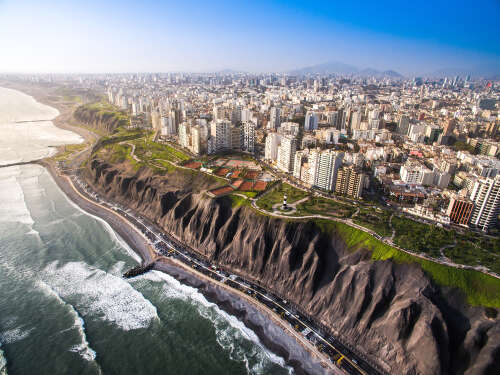
In a testament to the global commitment to environmental action, 119 cities from around the world have been recognised for their leadership in climate change initiatives, according to the sixth annual Cities A List published by CDP, a non-profit organisation running the world’s environmental disclosure system. This achievement underscores a paradigm shift where climate action is not just a priority but has become the mainstream for urban areas across the globe.

The 2023 A List, consisting of cities from every continent, showcases a diverse group of urban centres, including notable returns and newcomers. Particularly noteworthy is the increasing representation from the Global South, with cities in Indonesia, Türkiye and Vietnam making their debut on the A List. Some 40% of the total cities on the list are newcomers, emphasising the growing global momentum towards environmental consciousness.
CDP’s analysis reveals that the top-ranking cities are not merely symbolic in their commitment but are actively implementing measures to address climate change. Cities on the A List report four times as many mitigation and adaptation actions compared with their counterparts not on the list. This is a strong indicator that these cities are not just vocal about climate change but are taking tangible steps to combat its effects.
There were some notable exmples included with the report. In Lima, for example, Nestlé is making a positive impact by donating treated wastewater for the irrigation of green areas, covering 9% of the capital’s green spaces. Guadalajara is leading the way in Mexico with 38 fully electric buses, forming the first all-electric transport route in the country.
Elsewhere, Cape Town is committed to renewable energy, installing 1.5MW of solar panels in 2023, with plans for an additional 5MW between 2024 and 2026. Istanbul is pioneering electric-hybrid sea taxis for cleaner maritime transportation, while Paris engaged nearly 27,000 climate volunteers to spread awareness and promote sustainability.
Oslo is focusing on nature-based solutions, restoring 260 acres of bogs since 2019 to prevent flooding. Toronto‘s Eco-Roof Incentive Programme diverted 71.5 million litres of stormwater annually through green roofs, surpassing the rest of Canada combined. Denver enforces a Single-Use Accessory Restriction Ordinance, reducing plastic waste in retail food establishments.
Can Tho in Vietnam is set to enhance its street lighting by replacing 30,579 high-voltage lamps with energy-efficient LEDs and creating 381 smart light poles. Quezon City in the Philippines invests in Early Warning Systems and Automated Weather Stations to protect communities from tropical storms and flooding.
Adelaide secures a sustainable water supply by recycling up to 1.1 billion liters annually for green spaces and public amenities. Wellington, through the Charged Up Capital Programme, is installing 60 electric vehicle fast chargers across 30 public locations by June 2025. The City of London employed a digital twin to identify vulnerable areas and implement measures against heat stress and flooding.
As a final example, also in the UK, Sunderland, known for its ‘Bee Bus Stops,’ is installing living roofs on 90 bus shelters made of recycled materials and planted with native wildflowers. These roofs not only support biodiversity but also provide natural cooling, absorb rainwater, and filter air pollutants, contributing to a greener and healthier urban environment.
How are A List cities taking climate action?
The statistics further demonstrate that renewable energy usage is on the rise among A List cities, with some reporting that renewable sources constitute the majority of their energy consumption. The actions taken by these cities are diverse and impactful, ranging from innovative waste management solutions to the deployment of electric buses and large-scale renewable energy projects.
It is heartening to see cities in the Global South making significant strides, with countries like Brazil, Colombia and the Philippines achieving their highest-ever number of A-list cities. This dispels the myth that environmental leadership is confined to certain regions, showcasing a global commitment to sustainability.
Europe leads the charge with the largest share of cities on the A List, closely followed by North America and Latin America. The US, in particular, boasts the highest number of A List cities, underscoring the importance of local action in a country facing diverse climate challenges.
While celebrating the achievements of the A List cities, Maia Kutner, CDP director of cities, states and regions, emphasised the need for continued efforts:
“2023 will be remembered as the year when centuries-long climate records weren’t just broken, but smashed, in mere days and weeks. While cities around the world felt the full force of the year’s climate disasters, from heatwaves to floods, it’s positive that many are leading by example in tackling climate change with tangible action.
“Today, we are delighted to celebrate the 119 cities, from Lima to London, whose effective action makes them global climate leaders. Even more encouragingly, this is not the first time that many – including from the Global South – are on CDP’s A List, showing that serious climate action is now mainstream for many of the world’s cities.
“This is no time for complacency, though. Cities not reporting environmental data must step up their transparency, while many more need to accelerate their efforts to reach net zero and create a more sustainable future for all, especially the most vulnerable.”
[Read more: European housing market shifts towards affordable and sustainable living, new research shows]






